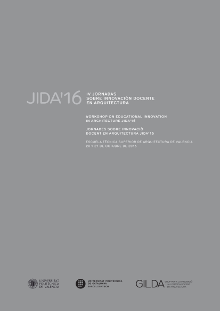Definition of the "creativity, innovation and problem solving" competence
DOI:
https://doi.org/10.5821/jida.2016.5129Abstract
The Rovira i Virgili University (URV), a public university based in Tarragona, made in 2003 a commitment toward the improvement within the EHEA, which culminated in the Strategic Plan of Education that defined a student-centered teaching and competence model, structured in three levels: “specific”, “transversal” and “nuclear” competences. From 2003 to the present, the University worked to integrate the competence model in the degrees and assess its quality, a process which has shown inadequacies and the need to simplify and update the model. Thus, a revision project has been proposed, which includes the specific competences of each degree and a few transversal competences: seven for bachelor and eight for masters. One of these competences is called CT3 and attempts to define aspects of “creativity, innovation and problem solving”, which have been grouped into a single container. This competence is central to the learning of architecture: it is one of the most important skills in the architectural studio work, and one of the principal skills that an architect should posses. The CT3 group has been working on the definition of this competence, and this communication explains the result of this process.View DOI information in DOIBoard Crossref (by UPC)






















